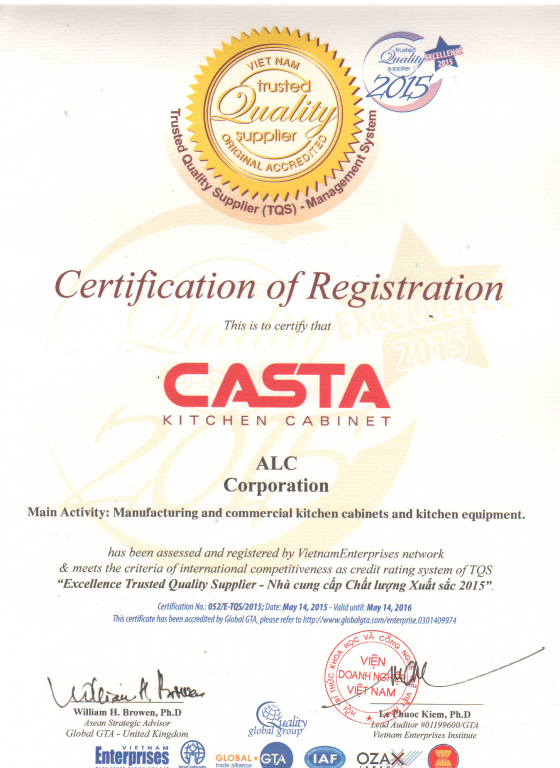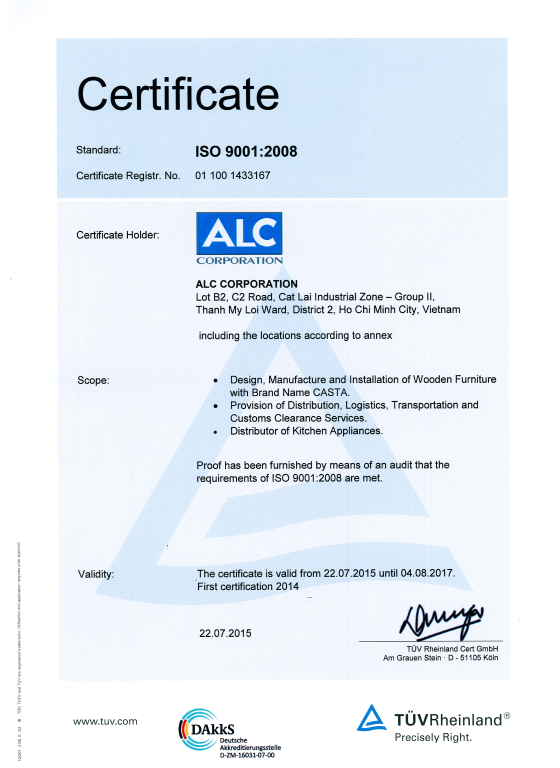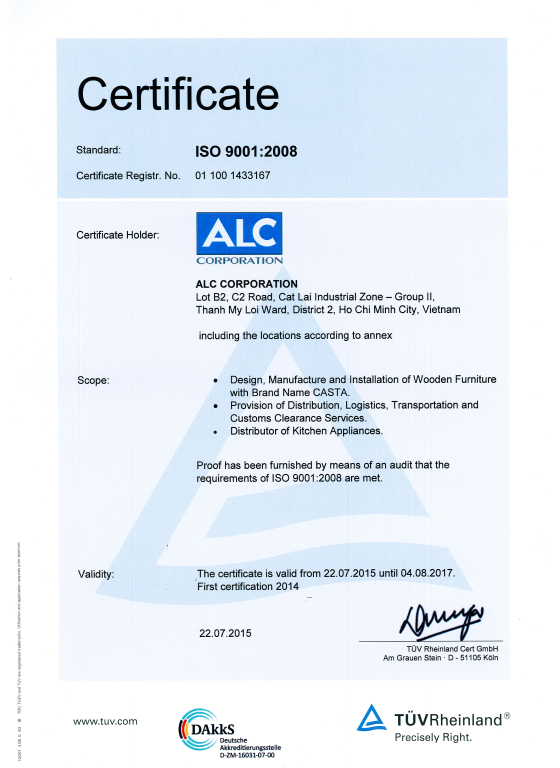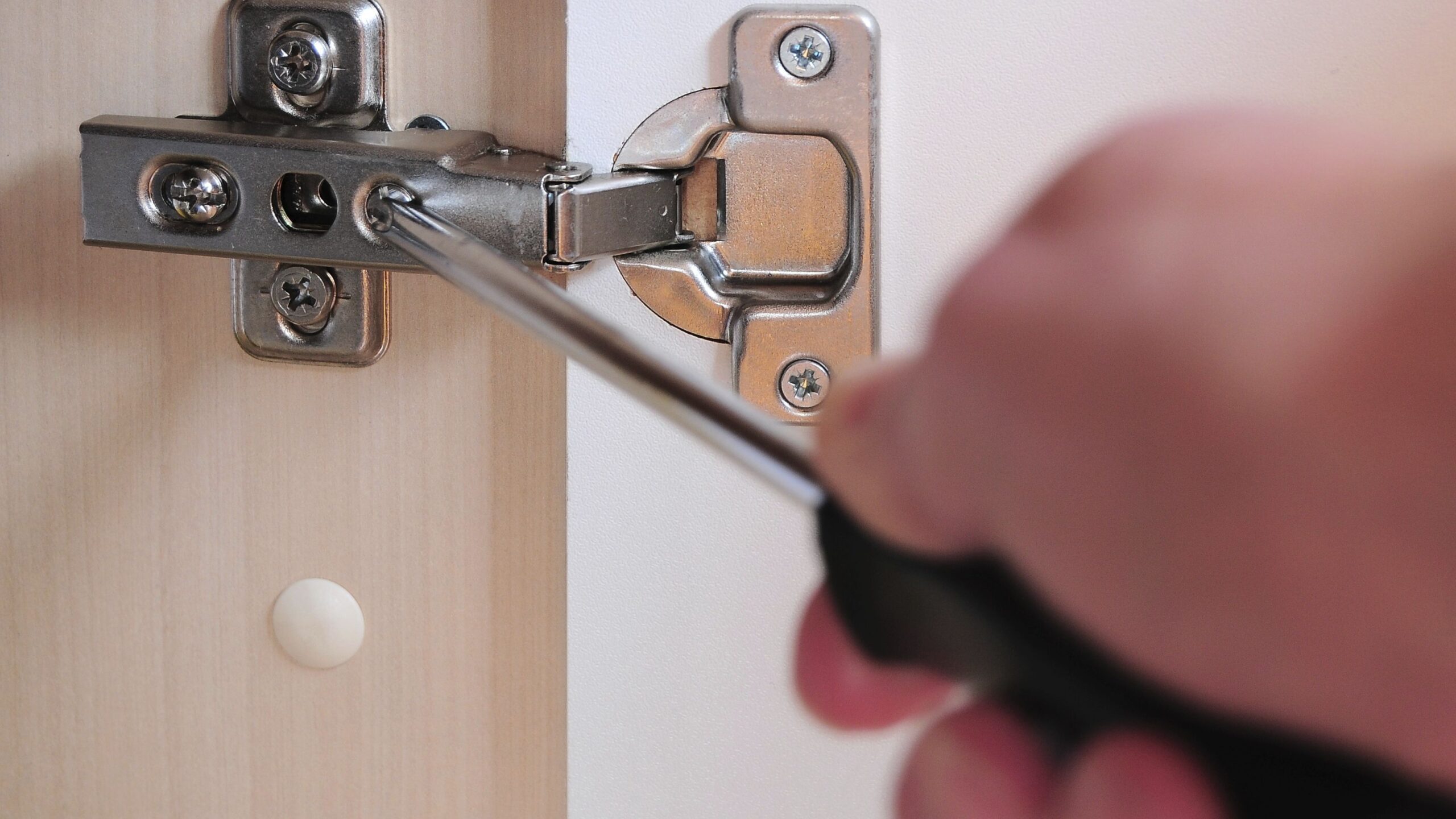Soft close cabinets—equipped with hydraulic or pneumatic damping mechanisms—have become the industry standard for kitchen and furniture installations. Their quiet, controlled closing action enhances both functionality and perceived value. But how much do soft close cabinets cost? In this comprehensive guide, we’ll explore the cost of soft close cabinets, analyze key pricing drivers, and offer strategies for contractors, cabinet brands, and furniture companies to optimize budgets without sacrificing quality.
Table of Contents
1. Key Factors Affecting the Cost of Soft Close Cabinets
Understanding the drivers behind the cost of soft close cabinets is essential for accurate budgeting and specification. Below, we delve deeper into each factor influencing price, with detailed examples and optimization tips.
1.1 Material Quality and Type (High Impact)
Choosing the right substrate drives both performance and the cost of soft close cabinets. Below, we highlight specific benefits and risks for each core material tier.
- Solid Wood & Multi-Ply Plywood ($250–$400/lft)
- Benefits:
- Superior Strength & Stability: Excellent screw-holding and resistance to sagging over time.
- Premium Aesthetics: Consistent grain patterns and edge banding options accept luxury finishes (hand-rubbed stains, UV lacquers).
- Longevity: Durability in high-traffic or moisture-controlled kitchens, supporting the premium cost of soft close cabinets.
- Risks:
- High Upfront Cost: Can double your baseline cabinet price, impacting project budgets.
- Visible Edges: Require precise edging or solid wood trim to avoid raw core exposure.
- Benefits:
- Veneered MDF / MR Plywood ($150–$200/lft)
- Benefits:
- Moisture Resistance: MR cores reduce swelling risk in moderate-humidity environments by up to 50%, protecting the cost of soft close cabinets investment.
- Stable Finish Platform: Smooth, void-free surface for high-quality veneer adhesion.
- Cost Efficiency: Balances durability and price—about $175/lft in North America, with potential savings offshore.
- Risks:
- Edge Vulnerability: Exposed edges must be fully sealed to prevent moisture ingress.
- Weight: Heavier than standard MDF, slightly increasing labor and shipping costs.
- Benefits:
- MDF / Particle Board with Melamine ($100–$150/lft)
- Benefits:
- Lowest Cost of Soft Close Cabinets: Entry-level substrate combined with factory melamine wrap keeps per-foot pricing under $150.
- Uniform Appearance: No grain or knot variation—ideal for consistent color runs.
- Fast Production: Compatible with high-speed routing and flat-pack RTA assembly.
- Risks:
- Moisture Sensitivity: Prone to swelling (20–30% edge expansion) if exposed to humidity or leaks.
- Lower Structural Strength: Limited load capacity—unsuitable for heavy countertops or shelving without reinforcement.
- Benefits:
Tip: Specifying moisture-resistant MDF cores lets you maintain a lower cost of soft close cabinets (around $150/lft) while ensuring resilience against kitchen humidity and occasional splashes.
Learn more: Types of kitchen cabinets materials
1.2 Customization & Design Complexity (High Impact)
- Fully Custom Cabinets ($300+/lft): Complex profiles—such as oversized shaker frames with shadow grooves and ogee edges—require additional CNC passes, custom tooling, and often manual finishing. These bespoke elements can push the cost of soft close cabinets beyond $350/lft in North America, especially when paired with multi-coat finishes.
- Semi-Custom / Modular Lines ($175–$225/lft): By standardizing box dimensions and retaining flexibility only on door styles or paint colors, you can cap the cost of soft close cabinets within a mid-range budget. Many brands offer semi-custom door upgrades (e.g., changing from a flat slab to a recessed panel) for an incremental $25–$50/lft.
Tip: Control customization premiums by installing platform cabinet boxes and reserving bespoke machining for high-visibility doors or drawer fronts—reducing the average cost of soft close cabinets by up to 30%.
Learn more: Best custom cabinet manufacturers

1.3 Hinge & Mechanism Technology (Medium-High Impact)
The choice of hinge has an outsized effect on both the cost of soft close cabinets and the long-term return on investment (ROI). Here’s how different hinge tiers compare:
- Premium European Hinges (Blum, Grass, Hettich) — $12–$20 per hinge
- Upfront Impact: On a typical 2-door cabinet requiring four hinges, premium hardware adds $48–$80 to the cost of soft close cabinets per cabinet (4 hinges × $12–$20).
- Performance Benefits: Offers up to 50,000 controlled-damp cycles, ultra-smooth closing, and built-in adjustability—key selling points that justify a 5–10% premium on cabinet pricing.
- Long-Term ROI: Dramatic reduction in callbacks and warranty claims; eliminating an estimated $20–$40 in service calls over 10 years per cabinet, recouping the initial hinge investment through lower maintenance costs.
- Economical OEM Hinges — $4–$8 per hinge
- Upfront Impact: Four hinges cost $16–$32 per cabinet, trimming the hinge component of your cost of soft close cabinets by up to $48 compared to premium models.
- Performance Trade-Offs: Provides reliable soft-close action for 15,000–20,000 cycles—adequate for many residential and mid-range projects but with louder closure and fewer adjustment features.
- Long-Term Considerations: You may incur $10–$20 in additional maintenance or replacement costs over a decade, especially in high-use settings, slightly offsetting initial savings.
Tip: For value-engineered builds, select mid-tier hinges priced at $8–$12 each with a 20,000+ cycle rating. This “sweet spot” adds only $8–$16 per cabinet (4 hinges × $8–$12), while delivering quieter operation and greater durability—optimizing both the cost of soft close cabinets and long-term ROI.
By upfronting hinge quality vs. cost, you can clearly quantify how each option influences your cabinet pricing, service liabilities, and customer satisfaction—ensuring the cost of soft close cabinets delivers maximum performance value over its lifecycle.
Learn more: Types of cabinet hinges
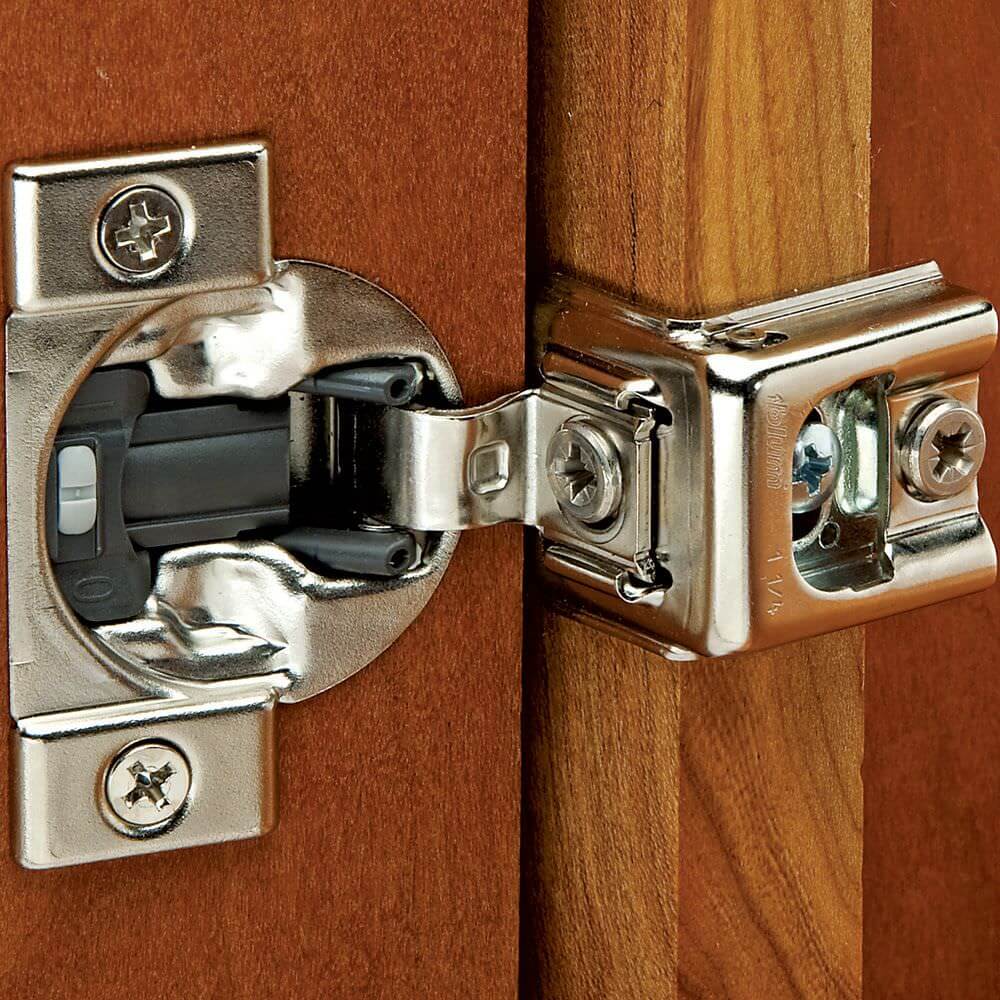
1.4 Manufacturing Process & Automation (Medium Impact)
- High Automation (HOMAG, SCM, Biesse Lines) ($140–$180/lft): Factories using automated CNC routing, edgebanding, and drilling optimize yield and consistency. Automation can reduce labor costs by 30% and minimize material waste—translating to a cost of soft close cabinets roughly $160/lft for mid-range builds.
- Manual Production ($160–$220/lft): In smaller shops or regions without advanced equipment, additional handwork and lower throughput raise the cost of soft close cabinets by 15–20%, with mid-range projects trending toward $200/lft.
Tip: Partner with Vietnam-based factories boasting 80%+ automation to achieve North American–quality cabinets at a 10–15% lower cost of soft close cabinets.

1.5 Order Quantity & Economies of Scale (Medium-Low Impact)
- Small Runs (<200 lft): Setup costs, tooling changes, and minimum order charges keep the cost of soft close cabinets at premium levels—typically $180–$220/lft for semi-custom lines.
- Bulk Orders (500+ lft): Spreading tooling and logistics over larger volumes unlocks per-unit discounts. Bulk rates often drop to $130–$160/lft, a 10–15% savings on mid-range cabinets.
Tip: Coordinate multiple projects or partner with other contractors to consolidate orders. Hitting volume thresholds can reduce the cost of soft close cabinets dramatically, improving overall project margins.
Learn more: Finding Reliable RTA & Knock-Down Furniture Suppliers in Vietnam
1.6 Shipping, Tariffs & Export Logistics (Low Impact, Variable)
- Ocean Freight & Duties ($5–$10/lft): Standard container shipping adds $5–$8 per linear foot, with U.S. import duties on specific wood products varying between 0–5%. Carefully structuring product mix (e.g., higher MDF content) can leverage duty-free tariffs under trade agreements.
- Flat-Pack (RTA) Savings: Shipping knock-down cabinets reduces volume by up to 30%, trimming freight costs by $2–$4/lft—directly lowering the landed cost of soft close cabinets.
Tip: Work with suppliers like Casta Cabinetry who provide export packaging optimized for soft close hardware protection, consolidated cargo strategies, and full customs documentation—minimizing unexpected spikes in your cost of soft close cabinets.
Learn more: Success Stories: US Companies Thriving with Vietnamese Cabinet and Furniture Manufacturers
By diving deeper into each cost driver—materials, customization, hinge technology, manufacturing methods, order scale, and logistics—contractors and brands can strategically navigate the cost of soft close cabinets landscape, ensuring their specifications align with both budget and performance targets.
2. Cost Breakdown: Analysis by Product Type & Market Segment
To fully grasp the cost of soft close cabinets, it’s invaluable to break down pricing by market tier, sourcing origin, and key component contributions. This deep dive helps contractors and brands forecast budgets, benchmark suppliers, and make informed trade-offs.
2.1 Estimated Price Ranges
| Segment | Cost per Linear Foot |
| Low-End Soft Close Cabinets | $100–$150 |
| Mid-Range Soft Close Cabinets | $150–$200 |
| High-End Soft Close Cabinets | $250–$400+ |
Insight: The cost of soft close cabinets scales steeply with material and customization. Entry-level MDF or particle board builds start around $100/lft, while bespoke solid-wood or multi-ply plywood designs with premium hardware can exceed $400/lft.
2.2 Domestic vs. Imported Pricing
- North American Sourcing: Local fabrication inherently includes higher labor rates (up to $50/hr for skilled cabinetmakers), stricter environmental regulations, and overhead costs—making domestic cost of soft close cabinets approximately 10–20% above offshore options.
- Vietnam-Based Manufacturers: Leveraging high automation (80–90% CNC, edge-banding, and routing) and favorable trade agreements, reputable Vietnamese OEMs match North American quality at a 10–15% lower cost of soft close cabinets, even after adding freight ($5–$10/lft) and duties.
Tip: For contractors and brands focused on reducing the cost of soft close cabinets without compromising performance or compliance, partnering with audited Vietnam-based factories often yields the best price-to-quality ratio.
2.3 Component Cost Analysis
| Component | Low-End | Mid-Range | High-End |
| Core Material | MDF / Particle Board ($20–$30/lft) | MR MDF / Plywood ($40–$60/lft) | Multi-Ply Plywood / Solid Wood ($80–$120/lft) |
| Hinge System | Generic Spring Damper ($4–$6 each) | Mid-Tier Soft Close ($8–$12 each) | Blum / Grass Premium ($15–$20 each) |
| Finish | Melamine Wrap ($5–$10/lft) | Laminate or Acrylic ($15–$25/lft) | Real Wood Veneer or PU Paint ($40–$60/lft) |
| Drawer Slides | Epoxy-Coated ($3–$5 each) | Under-Mount Soft Close ($10–$15 each) | Full-Extension Soft Close ($20–$30 each) |
| Labor & Assembly | Flat-Pack RTA ($10–$20/lft) | Mixed RTA & Assembled ($20–$35/lft) | Fully Assembled, Hand-Finished ($40–$60/lft) |
| Logistics | Domestic RTA Shipping ($5/lft) | ASEAN Semi-Custom ($7–$10/lft) | Export Luxury Packaging ($10–$15/lft) |
| Estimated Cost/lft | $100–$150 | $150–$200 | $250–$400+ |
- Low-End Builds achieve the lowest cost of soft close cabinets by combining economical MDF cores, basic spring-dampers, melamine finishes, epoxy slides, and flat-pack RTA labor—totaling around $100–$150 per linear foot.
- Mid-Range Solutions balance performance and price through moisture-resistant cores, mid-tier soft close hinges, laminate or acrylic surfaces, under-mount soft-close slides, and mixed assembly workflows—landing at $150–$200 per linear foot.
- High-End Custom Projects command the premium cost of soft close cabinets bracket ($250–$400+), featuring robust multi-ply or solid-wood cores, top-brand soft close mechanisms, real-wood veneers or high-end coatings, full-extension slides, and hand-finished assembly.
Best Value Build:
MR MDF / Plywood core + Mid-Tier Soft Close hinges + Laminate finish + Under-Mount Soft Close slides + Mixed RTA & Assembled labor + ASEAN Semi-Custom logistics
Estimated Cost: $160–$180 per linear foot
This configuration delivers durable moisture resistance, reliable soft-close performance, attractive finishes, and efficient assembly—maximizing ROI by blending cost control with high-end features.
Note: Collaborating with efficient Vietnamese OEMs like Casta Cabinetry can reduce your mid-range cost of soft close cabinets by 10–15% compared to North American equivalents, due to superior automation and duty-free MDF exports.
Learn more: Casta’s OEM cabinet manufacturer
By dissecting how each component—from core substrates to logistics—impacts the cost of soft close cabinets, contractors and brands can fine-tune specifications to optimize budgets without sacrificing durability, aesthetics, or user satisfaction.
3. Additional Cost Influencers
While materials, hinges, and manufacturing set the baseline, these additional factors can significantly sway the cost of soft close cabinets—and smart planning here often yields the biggest savings.
3.1 Customization Trade-Offs
- Fully Bespoke Profiles: Intricate door styles—beaded frames, arched tops, recessed panels—require extra CNC time, hand-sanding, and detailed finishing. These bespoke details can double the cost of soft close cabinets compared to simple slab or shaker doors.
- Semi-Custom Hybrid Approach: Specify standard cabinet carcasses and off-the-shelf carcass boxes, then upgrade only the door fronts or drawer faces with custom profiles. This strategy can reduce your overall soft close cabinets cost by up to 30%, while still delivering a unique aesthetic.
- Hardware & Accents: Custom knobs, inlays, and specialty glass inserts add perceived value but each premium add-on can tack on $5–$15 per linear foot. Plan hardware budgets separately from your base cost of soft close cabinets to maintain clarity in proposals.
Learn more: Kitchen cabinet trends 2025
3.2 Long-Term Value Considerations
- Reduced Callbacks & Service Calls: High-quality soft close soft close cabinets cost investments pay off through fewer warranty repairs. The durable hydraulic dampers in top-tier hinges last 25,000+ cycles, cutting service costs by an estimated $10–$20 per door over a 10-year period.
- Higher Resale & Lifetime Value: Homes and commercial spaces equipped with soft close cabinets command resale premiums of 3–5% in many markets, offsetting initial cost of soft close cabinets with higher property values.
- Lower Maintenance Over Time: Unlike spring-only hinges, soft close systems require virtually no adjustments once installed. This reliability translates into labor savings—conservatively $50–$100 per kitchen over a decade compared to standard hinges.
3.3 Impact of Bulk Ordering
- Volume Discounts on Raw Materials: Purchasing core substrates and hardware in bulk can reduce per-unit material costs by 5–10%. For a 1,000-linear-foot order, this can equate to $5,000–$15,000 savings in your overall cost of soft close cabinets.
- Shared Shipping & Consolidated Freight: Grouping multiple cabinet runs into full-container loads slashes per-linear-foot shipping costs by 20–30%. When shipping RTA cabinets, this could drop freight charges from $10/lft to $7/lft—directly lowering your cost of soft close cabinets.
- Order Aggregation Strategies: Contractors working on multi-site developments or retailers stocking private-label lines can combine orders to exceed 5,000 linear feet, unlocking tiered pricing structures that further reduce the cost of soft close cabinets by up to 15%.
By thoughtfully managing customization, emphasizing long-term value, and leveraging bulk purchasing power, you can optimize the cost of soft close cabinets—achieving both performance and profitability for every project.
4. Why Choose Casta for Your Soft Close Cabinet Needs
When aiming to optimize the cost of soft close cabinets without compromising on quality, Casta Cabinetry offers end-to-end solutions tailored for North American contractors and brands.
4.1 Premium Sourcing & Quality Control
- World-Class Hinge Partnerships: Collaborations with Blum, Grass, and leading OEM hinge suppliers guarantee that your soft close cabinets cost reflects only top-tier damping performance and multi-decade warranties.
- Rigorous Incoming Inspections: Every hinge batch and substrate panel undergoes in-house testing—cycle-life endurance, torque consistency, and dimensional accuracy checks—ensuring each linear foot of cabinet meets or exceeds spec before assembly.
- Traceable Component Origins: CARB Phase 2, FSC Mix-Credit, and E1 certifications on all wood-based materials provide compliance reassurance while maintaining competitive cost of soft close cabinets through responsible sourcing.
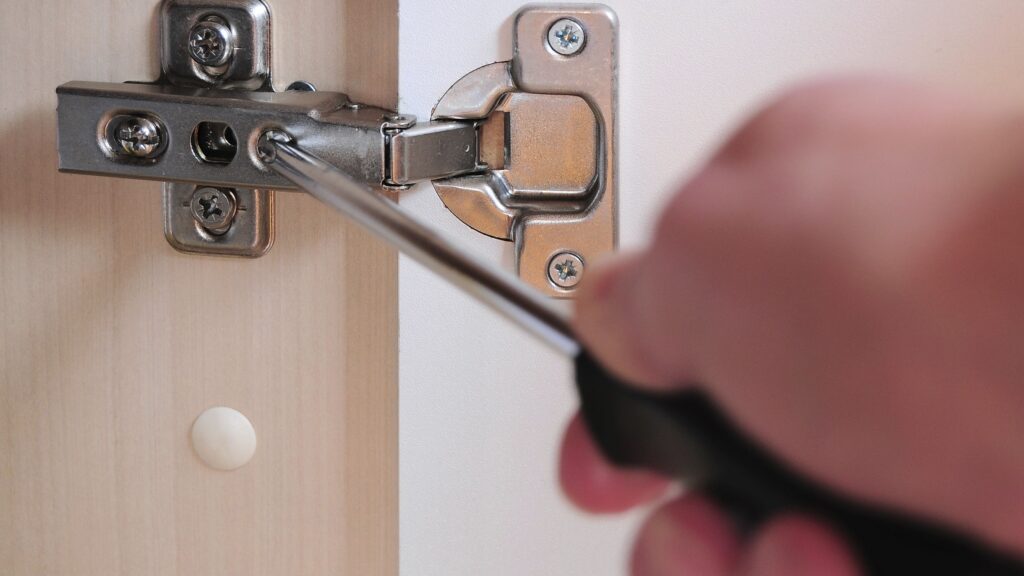
4.2 Advanced Production Capabilities
- European-Standard Automation: Our Vietnam-based facilities feature HOMAG, SCM, and Biesse CNC routers, edge-banding lines, and drilling centers. Achieving ±0.1 mm tolerances reduces rework and material waste—driving down the cost of soft close cabinets per linear foot.
- Integrated Workflow: Automated material handling and just-in-time component staging minimize manual labor, slashing production lead times by up to 30%. This efficiency directly translates into lower unit costs for soft close cabinets cost across small and large batches.
- Scalable Output: With over 200 shipping containers of finished cabinetry produced monthly, Casta easily accommodates pilot runs, seasonal spikes, and high-volume orders—maintaining stable soft close cabinets cost regardless of scale.
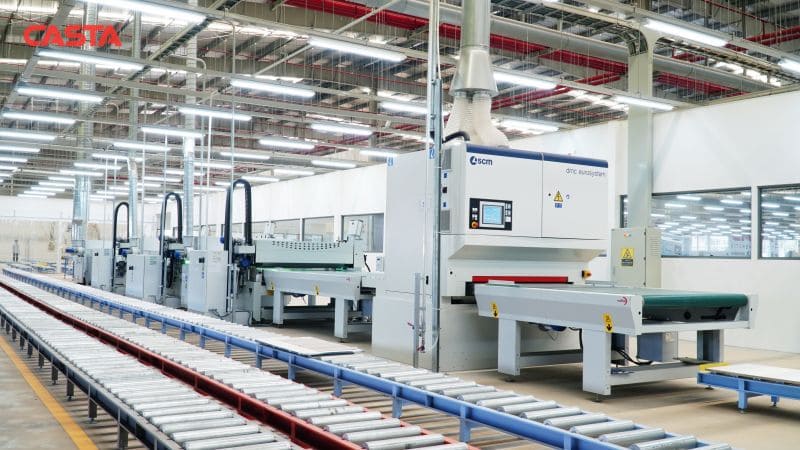
4.3 Customization & OEM/ODM Support
- Tailored Material Selection: From moisture-resistant MDF and multi-ply plywood to sustainable hardwood veneers, Casta’s material palette lets you balance aesthetics and durability against the cost of soft close cabinets.
- Design Collaboration: Through 3–5 iterative CAD/BIM review cycles, you refine door profiles, hinge mounting details, and finish palettes—locking in specifications before production to avoid costly change orders that inflate the cost of soft close cabinets.
- OEM/ODM Flexibility: Whether private-label lines or branded collections, Casta handles custom edge treatments, inset glass panels, and specialty hardware packaging. These bespoke services integrate seamlessly without significant soft close cabinets cost premiums compared to rigid, off-the-shelf offerings.
Learn more: Casta’s ideal custom cabinets
4.4 Reliable Export Logistics & Delivery
- Predictable Lead Times: Standard door-to-port schedules of 25–40 days—despite order size—help contractors lock in project timelines and avoid rush fees that can spike the cost of soft close cabinets.
Learn more: Lead Times & Supply Chain Resilience: Navigating Potential Disruptions
- Optimized Packaging: Export-grade wooden crates, vibration-dampening foam, and reinforced corner protection safeguard delicate soft close hinges and cabinet edges, reducing damage claims and hidden costs.
- Complete Documentation: Casta provides phytosanitary certificates, material test reports, and customs paperwork in advance, eliminating demurrage fees and unexpected duties that can inflate your overall cost of soft close cabinets.
- Consolidated Freight Options: By combining multiple orders into full-container loads, you achieve significant per-unit shipping savings, directly lowering the landed cost of soft close cabinets at destination ports.
Learn more: Casta’s Outstanding International Projects

5. Conclusion: Making an Informed Decision
The cost of soft close cabinets ranges significantly—from about $100 per linear foot for entry-level RTA to over $400 for fully custom, high-end installations. Key drivers include core materials, design complexity, hinge quality, factory automation, order volume, and logistics. By carefully balancing high-impact factors like material selection and door design with medium-impact considerations such as hinge technology and automation—and leveraging volume discounts—contractors and cabinet brands can control the soft close cabinets cost without sacrificing durability or style.
Collaborating with an experienced partner like Casta Cabinetry provides not only competitive pricing but also consistent quality control, advanced customization support, and reliable export logistics. This integrated approach ensures your projects achieve optimal performance, aesthetic appeal, and long-term value—so you get the best return on your cost of soft close cabinets investment.
6. FAQ Section
What is the average cost of soft close cabinets?
How do soft close cabinets compare to standard cabinets?
Can I reduce costs by ordering in bulk?
Are there extra costs for customization?
Why choose a Vietnam-based supplier like Casta?
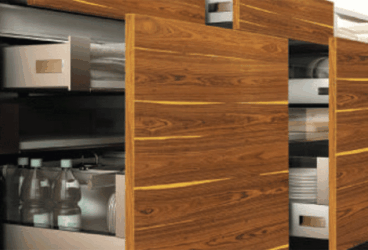
MDF vs Plywood for Kitchen Cabinets – Which is Better?...
MDF vs Plywood for kitchen cabinets is one of the most important decisions contractors and furniture brands must make wh...
11/14/2025 | David Nguyen
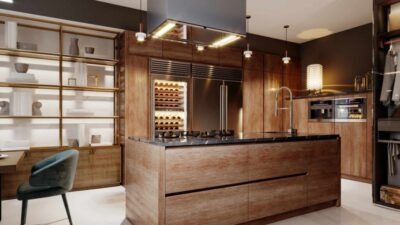
Plywood Kitchen Cabinets: Pros and Cons Explained for Contra...
Plywood kitchen cabinets are now one of the most preferred options in modern kitchen manufacturing, combining durability...
11/12/2025 | David Nguyen
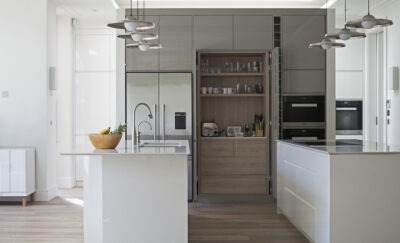
Best Italian Kitchen Cabinets: Modern Design, Precision Craf...
Italian kitchen cabinets represent the gold standard in modern kitchen design — celebrated for their craftsmanship, slee...
10/29/2025 | David Nguyen
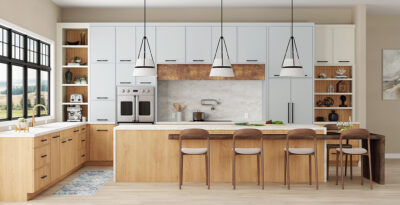
European vs American Kitchen Cabinets: Key Differences &...
European vs American kitchen cabinets is a core decision for anyone specifying cabinetry for modern buildings or homes. ...
10/27/2025 | David Nguyen
Contact us
Casta is always ready to listen and answer all customers' questions
